Argentine Patagonia
Exploring the Wild Beauty of Argentine Patagonia
Located in the southern edge of South America, Argentine Patagonia is a land of breathtaking landscapes, dramatic contrasts, and wilderness. From the towering Andes Mountains in the west to the windy plains of the Atlantic coast, this region captivates adventurers, nature lovers, and those seeking a serene escape from the modern world.
Whether you are drawn by its glacier-covered peaks, its vast steppe or its rich cultural heritage, Argentina’s Patagonia promises an unforgettable adventure.
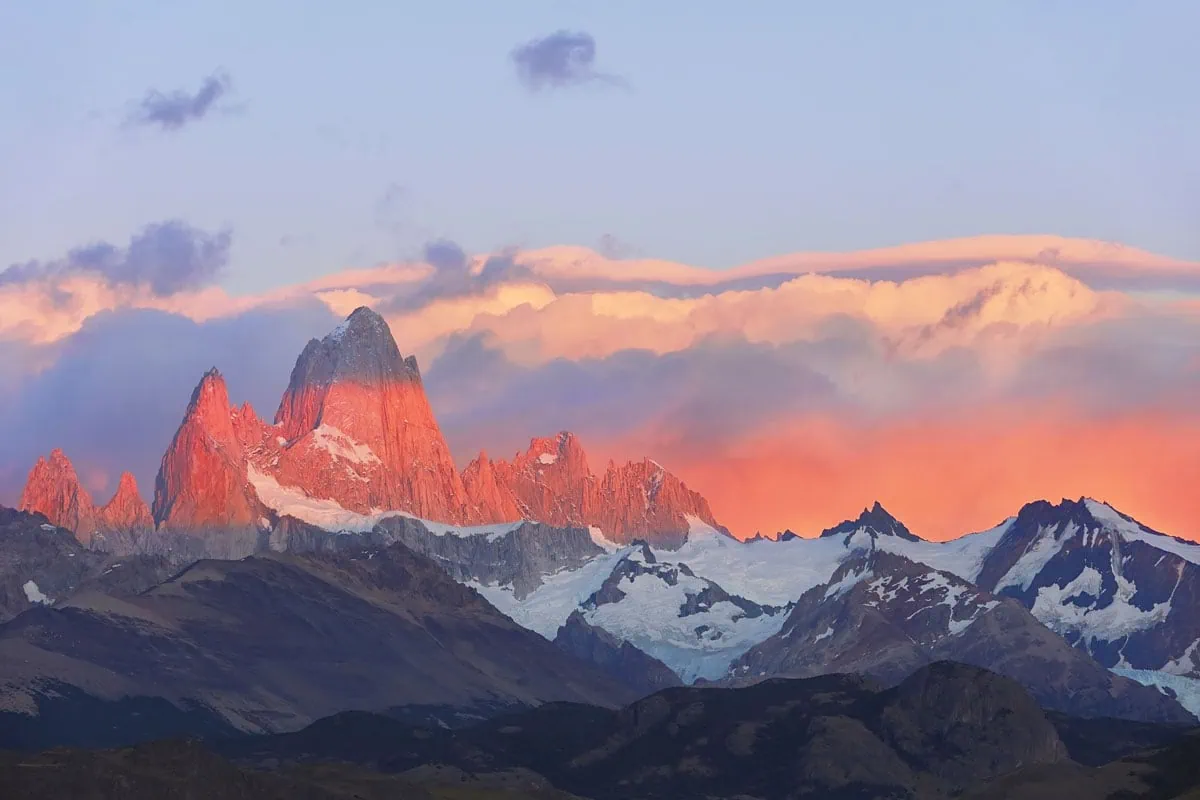
Looking for a Private Tour?
We can modify the itineraries and duration according to your needs and travel dates.
Write to us to get a quote.
PATAGONIA ARGENTINA PHOTO TOURS
A Burst of Warm Colors
Off the Beaten Path
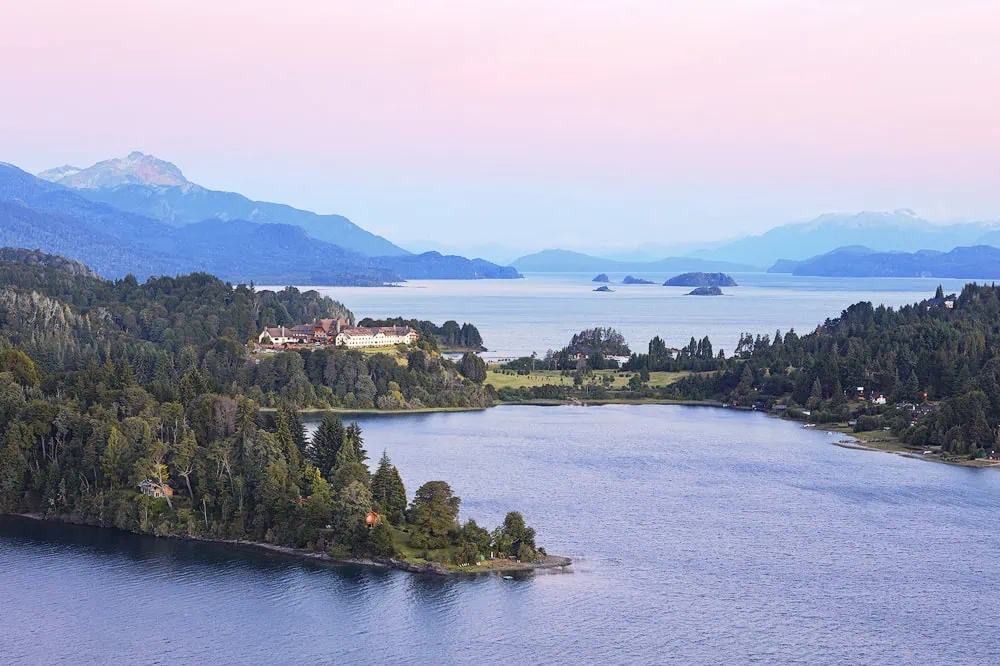
The Gateway to the Patagonia: Bariloche and the 7 Lakes
Often considered the gateway to Patagonia, San Carlos de Bariloche is a charming town nestled in the beautiful scenery of the Andes. Known for its Swiss-like architecture and delicious chocolates, Bariloche is a year-round destination.
In winter, it is a paradise for skiers and snowboarders who flock to the slopes of Cerro Catedral, one of South America’s premier ski resorts. During the summer months, the surrounding Nahuel Huapi National Park becomes a playground for hikers, kayakers and fishermen.
A must in Bariloche is the Circuito Chico, a scenic route that offers views of the region’s lakes and mountains. Stops along the way include the serene Llao Llao Hotel and Resort, perched on a hill overlooking Lake Nahuel Huapi, and the imposing Cerro Campanario, where a short chairlift ride will reward you with one of the best views in Patagonia.
The 7 Lakes Circuit, or “Ruta de los Siete Lagos,” is a scenic route in Argentine Patagonia that winds through the breathtaking landscapes between the towns of San Martín de los Andes and Villa La Angostura. This 108-kilometer route takes travelers through seven pristine glacial lakes-Lácar, Machónico, Falkner, Villarino, Escondido, Correntoso, and Espejo-each surrounded by lush forests, snow-capped peaks, and abundant wildlife.
The circuit is perfect for a leisurely drive and offers numerous opportunities for hiking, picnicking and capturing stunning photographs of the region’s natural beauty.
Caviahue and the Majestic Agrio Waterfall
Tucked away in the northwestern corner of Argentina’s Neuquén province, Caviahue is a hidden gem that offers an enchanting mix of volcanic landscapes, hot springs, and unspoiled nature.
This picturesque mountain village, located near the border with Chile, is framed by the imposing Copahue volcano and the serene waters of Lake Caviahue. Among its many natural attractions, Agrio Waterfall stands out as a must-see destination for photography and nature lovers.
The Copahue Hot Springs, located a short distance from the village, offer a range of wellness treatments, including mud baths, thermal pools, and hydrotherapy sessions. These mineral-rich waters are said to help alleviate various ailments, making Caviahue a popular destination for health and wellness tourism.
The Agrio Waterfall, or Salto del Agrio, is one of the most spectacular natural attractions near Caviahue. The journey to the waterfall takes visitors through striking volcanic landscapes, characterized by rugged terrain, ancient lava flows and native forests.
Upon arrival, the view of the Agrio Waterfall is nothing short of awe-inspiring. The waterfall drops dramatically over basalt cliffs and plunges into a deep pool below. The vibrant, mineral-rich waters create a striking contrast with the dark volcanic rock, producing a mesmerizing spectacle of colors ranging from emerald green to turquoise blue. The surrounding cliffs, stained red and orange by iron deposits, contribute to the surreal beauty of the scene.
The Agrio River, which feeds the waterfall, originates from the melting snow of the Copahue volcano. The river’s high mineral content, a result of volcanic activity, contributes to the unique coloring of the waterfall and surrounding rock formations. The constant flow of water over the cliffs has carved a series of terraces and natural pools, creating a dynamic and ever-changing landscape.
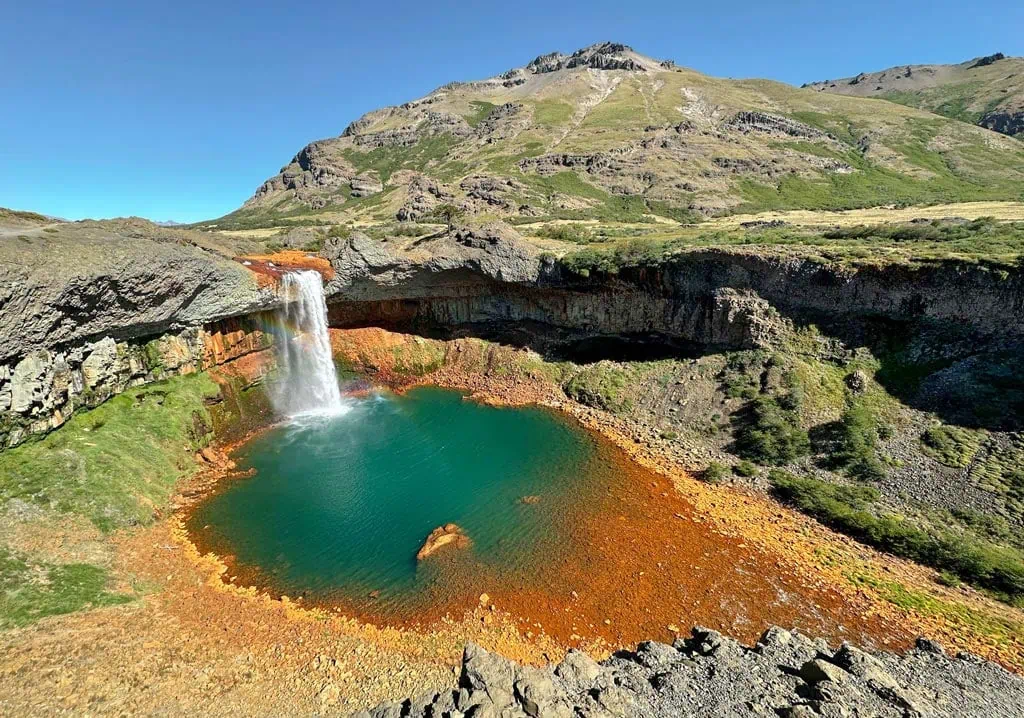
A Land of Glaciers: El Calafate
The small town of El Calafate, in the Patagonia Argentina, is the gateway to Los Glaciares National Park.
This UNESCO World Heritage site is home to some of the most impressive glaciers on the planet. The main attraction is the Perito Moreno Glacier, a huge ice formation that stretches more than 30 kilometers and reaches a height of 70 meters. It is possible to witness spectacular ice calving events in which huge chunks of ice break off, falling onto the surrounding waters.
Visitors can view the glacier up close via a series of walkways and viewing platforms, or take a boat tour to appreciate its grandeur from the water. For the more adventurous, ice trekking on the surface of the glacier offers a unique opportunity to explore this land of ice.
The Imposing Peaks of El Chaltén: Fitz Roy and Torre
Further north in Los Glaciares National Park is El Chaltén, a remote village that has earned the title of Argentina’s trekking capital.
Nestled beneath the jagged peaks of Fitz Roy, El Chaltén is a Patagonia Argentina paradise for landscape photographers, hikers, and mountaineers. The town is surrounded by a network of trails that cater to all levels of experience, from easy day hikes to challenging multi-day treks.
The Laguna de los Tres trail is a visitor favorite and leads to a beautiful glacial lake with breathtaking views of Mount Fitz Roy. Another popular hike is to Laguna Torre, which offers close-up views of the towering Cerro Torre and surrounding glaciers.

The Windswept Plains of the Patagonian Steppe
While mountains and glaciers often steal the spotlight, the Patagonian steppe is an equally fascinating part of the region. This vast, arid landscape is characterized by rolling hills, steep plateaus, and endless horizons. The steppe is home to unique wildlife, including guanacos, rheas and the elusive Andean condor.
A great way to experience the steppe is to visit Estancia Cristina, a historic ranch located within Los Glaciares National Park. Accessible only by boat, crossing the Argentino Lake, the estancia offers guided tours that delve into the region’s history, including a visit to a fossil-rich canyon and a hike to a viewpoint overlooking the Upsala Glacier.
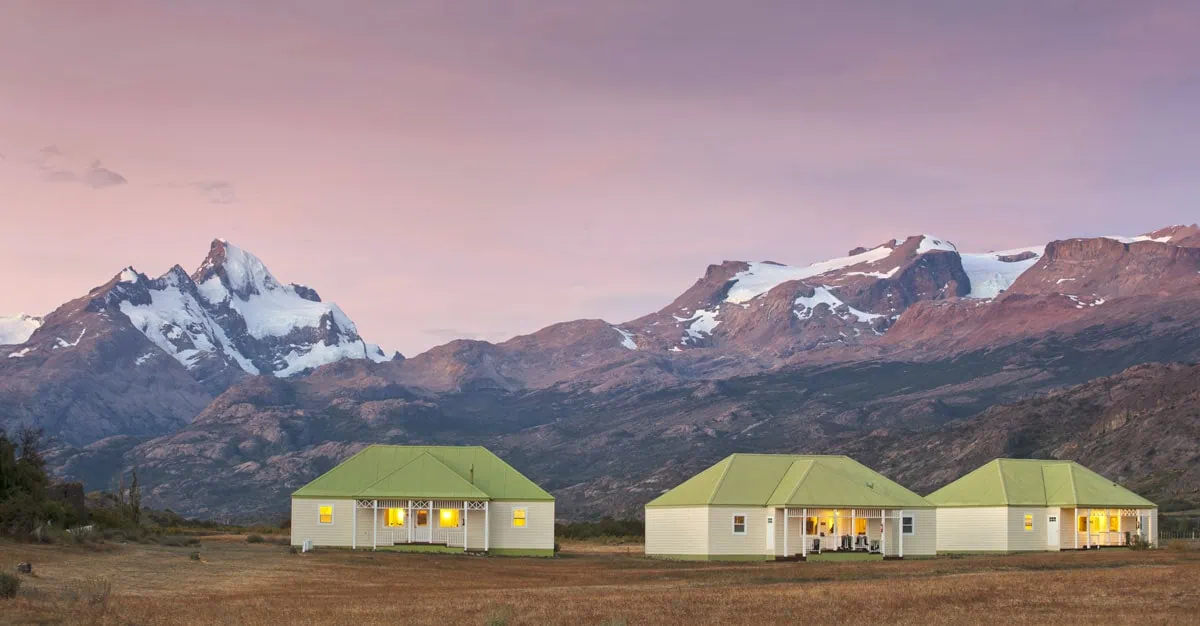
The Untamed Coastline: Valdes Peninsula and Puerto Deseado
The Atlantic coast of Patagonia is a remote wilderness area that boasts a wealth of marine life. The Valdés Peninsula, a UNESCO World Heritage Site, is one of the best places in the world to observe wildlife.
From June to October/November, Southern Right Whales come to the peninsula’s protected bays to breed and calve, offering visitors a chance to see these magnificent creatures up close. The area is also home to colonies of Magellanic penguins, sea lions and elephant seals.
A visit to Punta Tombo, south of the Valdés Peninsula, is a must for penguin enthusiasts. This protected area is home to one of the largest Magellanic penguin colonies in South America, with hundreds of thousands of penguins coming to nest here each year. Wooden walkways allow visitors to watch the penguins come and go without disturbing their habitat.
The town of Puerto Deseado, far south of the Valdes Peninsula along the Patagonian coast, is a fascinating place known for its rich marine biodiversity and unique geological formations.
Nestled along the Deseado River estuary, the town offers visitors the opportunity to explore rugged cliffs and extensive wildlife reserves. This area is a paradise for birdwatchers and wildlife enthusiasts, with opportunities to see Rockhoppers and Magellanic penguins, cormorants, sea lions, and orcas.
The nearby Reserva Natural Ría Deseado offers a stunning backdrop of natural beauty, where guided boat tours allow for up-close encounters with the region’s wildlife.
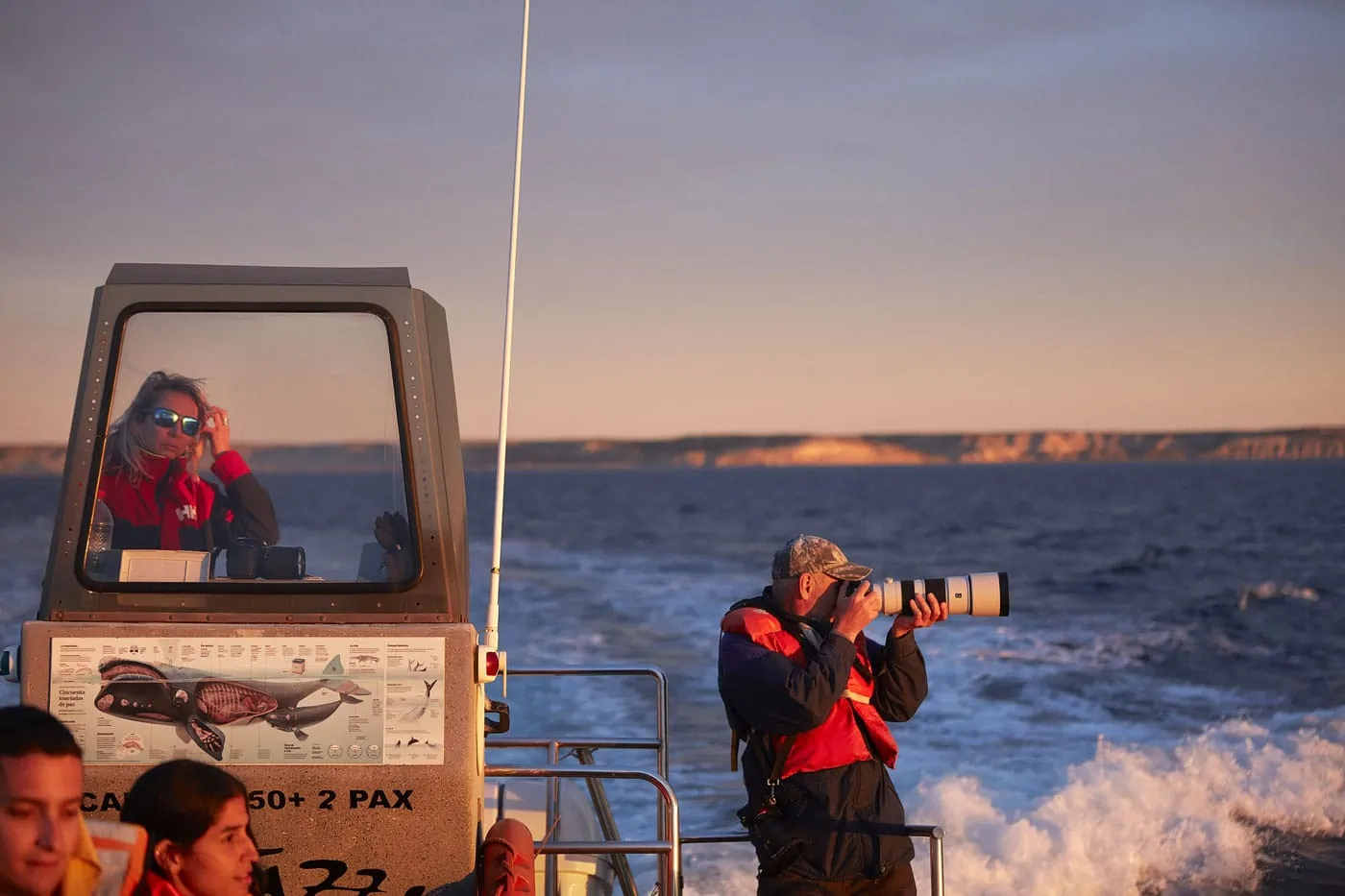
Cultural Riches and Gaucho Heritage
Beyond its natural wonders, Argentine Patagonia is rich in cultural heritage. The region has a strong connection to the indigenous Mapuche people, whose traditions and crafts can be explored in various communities throughout the area.
Additionally, Patagonia’s history as a frontier land has given rise to a distinctive gaucho culture. These skilled horsemen are the embodiment of the Argentine cowboy, and visitors can experience their way of life by staying at one of the many estancias that dot the landscape.
Estancias offer a glimpse into the traditional practices of sheep farming and horse breeding, and many welcome guests to participate in daily activities such as cattle drives, horseback riding, and traditional asado barbecues.
Jaramillo National Park
Located in the Santa Cruz province, the Jaramillo National Park—also known as Bosques Petrificados de Jaramillo—offers a captivating glimpse into Earth’s ancient past. This expansive park, covering over 78,500 hectares, is home to one of the world’s most remarkable petrified forests, where fossilized trees stand as silent witnesses to a prehistoric era.
Approximately 150 million years ago, during the Late Jurassic period, this region was a lush, humid forest teeming with towering conifers like the ancient Araucaria mirabilis. Volcanic eruptions and the gradual uplift of the Andes Mountains buried these forests under layers of ash and sediment. Over millennia, mineral-rich waters permeated the organic material, transforming wood into stone through a process known as permineralization. Today, visitors can marvel at these petrified giants, some measuring up to 3 meters in diameter and stretching over 30 meters in length.
The park features a 2-kilometer paleontological trail that guides visitors through a surreal landscape dotted with fossilized trunks and unique geological formations. Interpretive panels along the path provide insights into the area’s geological history and the process of petrification . A notable landmark within the park is Cerro Madre e Hija, remnants of an ancient volcanic cone that adds to the dramatic scenery.
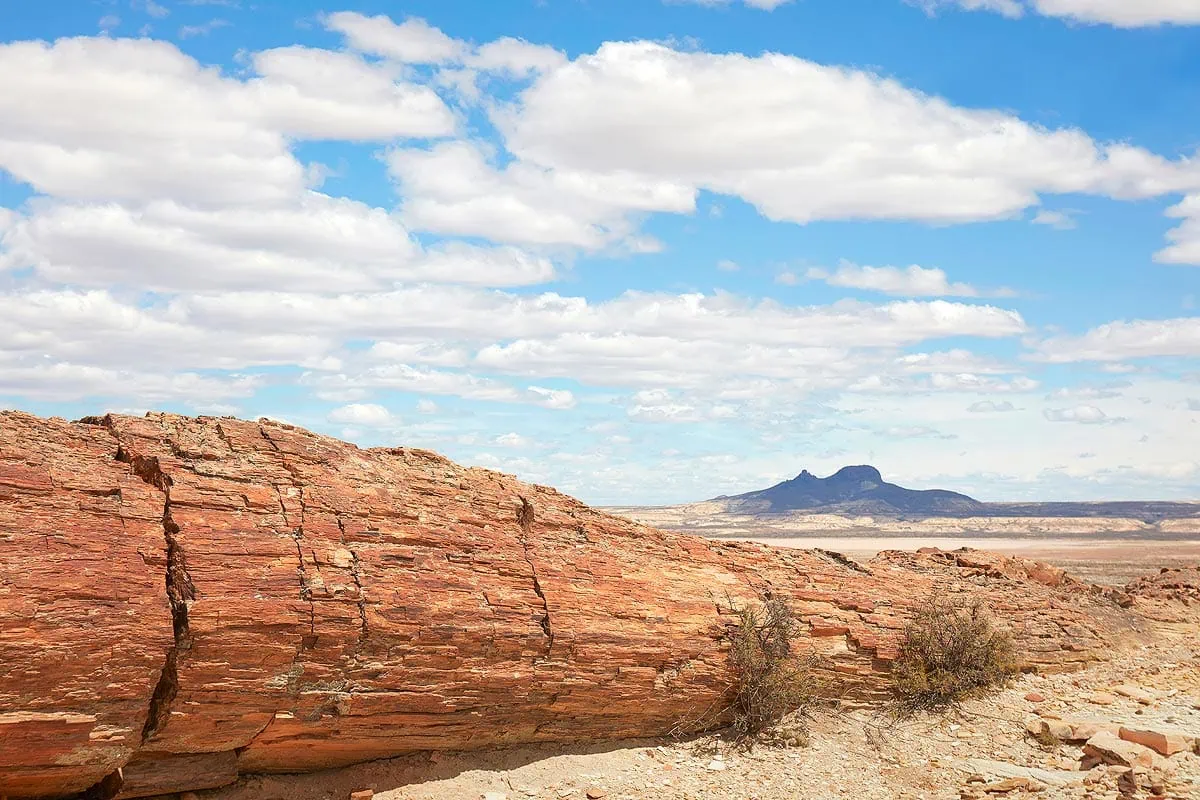
Practical Tips for Travelers
Traveling in Argentine Patagonia requires some planning due to the region’s vast distances and remote locations. Here are a few tips:
Best Time to Visit: The best time to visit Patagonia is during the southern hemisphere summer, from November to March, when the weather is milder and the days are longer. However, each season has its own charm, and winter offers unique opportunities.
Getting Around: Patagonian distances are vast, and many attractions are far apart. Renting a car or a private driver is a convenient way to explore the region, but long-distance buses and domestic flights are also available.
Accommodation: From luxury lodges and boutique hotels to rustic hostels and campgrounds, Patagonia offers a range of accommodations to suit every budget. Booking in advance is recommended, especially during peak travel seasons.
Packing Essentials: The weather in Patagonia can be unpredictable, so packing layers is essential. Windproof and waterproof clothing, sturdy hiking boots, and sun protection are must-haves. Don’t forget your camera!
